Farmington, Utah – Tuesday, July 2nd, 2024
Lagoon was one of the largest parks in the U.S. I had yet to visit. Despite not getting to it until 2024, it felt like a place I had already known for at least twenty years. It fits in the mold of traditional American amusement parks that you’ll still find out east, especially in states like Pennsylvania. Take the historical rides and park layout of Kennywood, the nostalgic eclecticism and picnic grounds of Knoebels, and the homespun attempts at becoming a modern thrill park like Hersheypark, and you’ll have most of the ingredients needed to explain Lagoon. The biggest difference is the rugged Wasatch mountain range serving as the backdrop of the park, making its old fashioned charms one of a rare breed still found west of the Mississippi.
 But a true classic can’t be identified just by a still photograph of what’s contained within, but by observing how it comes to life once it’s filled with people. Most modern corporate parks have an atmosphere I’d characterize as somewhat stifled. People are cautiously defensive as they’re boxed in by queues, high prices, and a need to prioritize their vacation strategy. You see all these atomized little groups competing for limited resources within the framework of a heavily regulated park environment, and there’s a shared sense that it’s all a little bit overwhelming and unfamiliar.
But a true classic can’t be identified just by a still photograph of what’s contained within, but by observing how it comes to life once it’s filled with people. Most modern corporate parks have an atmosphere I’d characterize as somewhat stifled. People are cautiously defensive as they’re boxed in by queues, high prices, and a need to prioritize their vacation strategy. You see all these atomized little groups competing for limited resources within the framework of a heavily regulated park environment, and there’s a shared sense that it’s all a little bit overwhelming and unfamiliar.
At a park like Lagoon, however, nearly everyone’s a local and has been coming here since they could walk. It’s also a chaotic environment, but one that’s human scaled and filled by people who are comfortable and confident within it. Kids and teens are allowed to free roam away from their parents, and every attraction has been time-tested to have an audience that it serves with efficiency. Even if you see queues of people spilling out everywhere over the midways (Lagoon doesn’t build nearly enough defined queue space for their rides), they all move and nobody’s particularly stressed. There’s a sense that this park is filled by and exists for a community.
 Let’s not forget that Lagoon is located in Salt Lake City, Utah, one of the most lily-white and culturally conservative metropolises within the country. If you’re from out of state and going to Salt Lake City for Lagoon, make sure you spend a day beforehand at some of the museums and landmarks to get a sense of the city as a whole. It’s like what liberals fantasize the Nordic states to be like, only for Mormon Republicans. Everything’s clean and friendly and efficient and sociable, and they’ve been able to keep it that way by keeping the community very insular. Brigham Young picked this land because it’s in the middle of nowhere, and nearly two centuries later it still very much feels that way. In that context Lagoon makes a lot more sense, with its in-house rides and weird homespun energy that’s like Epcot Centre as a real park.
Let’s not forget that Lagoon is located in Salt Lake City, Utah, one of the most lily-white and culturally conservative metropolises within the country. If you’re from out of state and going to Salt Lake City for Lagoon, make sure you spend a day beforehand at some of the museums and landmarks to get a sense of the city as a whole. It’s like what liberals fantasize the Nordic states to be like, only for Mormon Republicans. Everything’s clean and friendly and efficient and sociable, and they’ve been able to keep it that way by keeping the community very insular. Brigham Young picked this land because it’s in the middle of nowhere, and nearly two centuries later it still very much feels that way. In that context Lagoon makes a lot more sense, with its in-house rides and weird homespun energy that’s like Epcot Centre as a real park.
Primordial
 People talk about Disney or Universal quality experiences, which I always find reductive. There are many examples of attractions that exceed qualitative benchmarks from either of those two companies, but are still very much their own things that would never exist if put through the Imagineering or Universal Creative process. Primordial is a prime example, since you could look at the technology and level of thematic ambition and claim it exceeds many comparable attractions in California or Florida. That mountain is sculpted in 360 degrees! Other companies don’t put that much effort in any more because they know they don’t have to if it’s only ever viewed from one side. Speaking of, why is such a detailed mountain isolated out in the middle of a field, or why does the only outdoor coaster segment face away from the elaborate themed design? In many ways Primordial has the feel of a hobbyist’s ultimate interpretation of a Disney-style attraction, taking their time to get many of the details to exceed what the budget and timeline-conscious corporate counterparts would bother with, but in a way that feels like the preplanning phase took up a much smaller fraction of the project timeline, and spent most of the five years of construction figuring it out.
People talk about Disney or Universal quality experiences, which I always find reductive. There are many examples of attractions that exceed qualitative benchmarks from either of those two companies, but are still very much their own things that would never exist if put through the Imagineering or Universal Creative process. Primordial is a prime example, since you could look at the technology and level of thematic ambition and claim it exceeds many comparable attractions in California or Florida. That mountain is sculpted in 360 degrees! Other companies don’t put that much effort in any more because they know they don’t have to if it’s only ever viewed from one side. Speaking of, why is such a detailed mountain isolated out in the middle of a field, or why does the only outdoor coaster segment face away from the elaborate themed design? In many ways Primordial has the feel of a hobbyist’s ultimate interpretation of a Disney-style attraction, taking their time to get many of the details to exceed what the budget and timeline-conscious corporate counterparts would bother with, but in a way that feels like the preplanning phase took up a much smaller fraction of the project timeline, and spent most of the five years of construction figuring it out.
 I can’t tell you what Primordial’s story is. Something high fantasy inspired. The name doesn’t explain it, I think it was a placeholder that leaked and everyone thought it sounded cool so they kept it. There’s an animatronic in the queue that’s supposed to explain the story, but I missed it because I rope-dropped Primordial at park opening to be on the first ride of the day, and the line was too long later for a second go. If you miss that scene in the queue, the next line of dialogue you hear during the experience is at the very end congratulating you on your success. I’m fairly good at reading the details between the lines, but not when there are only two lines.
I can’t tell you what Primordial’s story is. Something high fantasy inspired. The name doesn’t explain it, I think it was a placeholder that leaked and everyone thought it sounded cool so they kept it. There’s an animatronic in the queue that’s supposed to explain the story, but I missed it because I rope-dropped Primordial at park opening to be on the first ride of the day, and the line was too long later for a second go. If you miss that scene in the queue, the next line of dialogue you hear during the experience is at the very end congratulating you on your success. I’m fairly good at reading the details between the lines, but not when there are only two lines.
 The ride experience is likewise very piecemeal in a way that’s fun yet naive. First it’s an outdoor roller coaster, which is good because I like roller coasters. Then it’s an interactive shooting dark ride, which is probably a good fit for this park where 50% of guests are local 14 year-olds, and they did a pretty good job on buying a very big screen. Then it becomes an indoor roller coaster going backward through the dark caves and foggy lights, which is definitely my favorite bit; very exciting! Then it’s more shooting, which is fine because we already committed to using the awkward shooting bit once before so we all might as well get more mileage out of the gimmick with a second scene. Finally, there’s a drop track, or a sideways slide drop track, which you won’t know which until it happens. That’s a super cool finale! I got the drop track, and wanted to go back for the sideways slide track which seemed even cooler, but apparently one side was broken later that day (the employee wasn’t sure which) and that was why the already low capacity was cut in half. I was maybe willing to wait two hours if the disjointed sequence of things that happen to you on this ride was maybe going to be slightly different, but if I knew it was going to be the exact same random sequence, then no thanks!
The ride experience is likewise very piecemeal in a way that’s fun yet naive. First it’s an outdoor roller coaster, which is good because I like roller coasters. Then it’s an interactive shooting dark ride, which is probably a good fit for this park where 50% of guests are local 14 year-olds, and they did a pretty good job on buying a very big screen. Then it becomes an indoor roller coaster going backward through the dark caves and foggy lights, which is definitely my favorite bit; very exciting! Then it’s more shooting, which is fine because we already committed to using the awkward shooting bit once before so we all might as well get more mileage out of the gimmick with a second scene. Finally, there’s a drop track, or a sideways slide drop track, which you won’t know which until it happens. That’s a super cool finale! I got the drop track, and wanted to go back for the sideways slide track which seemed even cooler, but apparently one side was broken later that day (the employee wasn’t sure which) and that was why the already low capacity was cut in half. I was maybe willing to wait two hours if the disjointed sequence of things that happen to you on this ride was maybe going to be slightly different, but if I knew it was going to be the exact same random sequence, then no thanks!
Cannibal
Look, the name is unfortunate. Cannibalism has a long documented history as primarily existing in the popular imagination to stoke fear of the (usually dark-skinned) savage other. Many theme parks rely on exoticism as a theming trope, often with strong colonial undercurrents that underscore the perspective of the assumed audience. (Look at any of Disney’s Adventurelands.) Usually these tropes are used for laughs, but to represent the park’s tallest and most intense roller coaster the intent here (“Cannibal” is written in imposing block lettering) seems more to inspire fear and intimidation. Of course being near Salt Lake City, that assumed audience is predominantly white, Mormon Republicans whose relationship with the outside world is significantly filtered through missionary work. But maybe I shouldn’t assume anything about this audience. Twenty miles away at the ‘This Is the Place’ monument, you can see a major sculptural element and historical marker dedicated to the Donner Party’s role in first charting the course that led to Salt Lake City.1 Cannibalism is quite literally part of this region’s founding mythology.
 While the name suggests certain images and ideas, the actual thematic detail is more of a headscratcher, skewing Greco-Roman in influence with certain non-specific exotic/tribal references mixed in. Then the loading platform includes a mural of flaming skulls flying out of a temple in a remote jungle valley. Trying to reverse-engineer the creative process, the best I can figure is that “Cannibal” got associated with “Hannibal” (perhaps via Hannibal Lecter), and then somehow Hannibal of Carthage got mixed into the mood boards as the designated African influence to avoid the more problematic aspects of cannibalism, real or imagined. I’ll probably get told I’m overthinking it; it’s just a name that sounds cool with a theme that looks cool. And you know what, divorced of all context, it kinda pulls it off.
While the name suggests certain images and ideas, the actual thematic detail is more of a headscratcher, skewing Greco-Roman in influence with certain non-specific exotic/tribal references mixed in. Then the loading platform includes a mural of flaming skulls flying out of a temple in a remote jungle valley. Trying to reverse-engineer the creative process, the best I can figure is that “Cannibal” got associated with “Hannibal” (perhaps via Hannibal Lecter), and then somehow Hannibal of Carthage got mixed into the mood boards as the designated African influence to avoid the more problematic aspects of cannibalism, real or imagined. I’ll probably get told I’m overthinking it; it’s just a name that sounds cool with a theme that looks cool. And you know what, divorced of all context, it kinda pulls it off.
 Cannibal is likely the most non-standard hypercoaster in North America, and it also rates decently well among the best. That elevator lift is very intimidating. For whatever reason, two-hundred feet of vertical clearance is much more vertigo-inducing when it’s indoor than outdoor, I suspect due to the much stronger visual convergence points surrounding you. It’s almost a relief to emerge into the open horizon of the outdoors, but the subsequent 116° drop offers a supremely satisfying “around and down” out-of-your-seat freefalling sensation that delivers on every thrilling promise made by that lift.
Cannibal is likely the most non-standard hypercoaster in North America, and it also rates decently well among the best. That elevator lift is very intimidating. For whatever reason, two-hundred feet of vertical clearance is much more vertigo-inducing when it’s indoor than outdoor, I suspect due to the much stronger visual convergence points surrounding you. It’s almost a relief to emerge into the open horizon of the outdoors, but the subsequent 116° drop offers a supremely satisfying “around and down” out-of-your-seat freefalling sensation that delivers on every thrilling promise made by that lift.
The first part of the layout consists of smooth inversions or overbanks taken at impressive heights and high speeds of up to 72mph. Even when a midcourse block brake slows things down in the second half, the back-and-forth barrel rolls dangling just feet above an elevated lagoon manages to sustain quite a bit of excitement in a new form. A descending helix finale is the most conventional aspect of the ride layout, and even that works as a way to wrap up the action with a tunnel and waterfall added for extra interest. The fact that it’s all contained within a 350’ x 200’ rectangular footprint makes it all the more of an achievement, albeit one that seems needlessly self-imposed given the surplus of fields and parking that surround the site (including from the coaster’s most visually impressive angles). Even with Primordial’s more ambitious use of theming and technology, Cannibal remains Lagoon’s most unique creation and most deserving of multiple rides.
Wicked
 It’s hard not to look at Wicked as the beta model for what ultimately became Cannibal, both being non-Gerstlauer Eurofighter imitations of varying scales. Wicked was actually quite a big deal when it opened in 2007 as Lagoon’s first large-scale, custom designed roller coaster since… the Roller Coaster. Even beyond Lagoon, it was significant as the first vertical launched coaster to open in the world, a still incredibly rare feature today.
It’s hard not to look at Wicked as the beta model for what ultimately became Cannibal, both being non-Gerstlauer Eurofighter imitations of varying scales. Wicked was actually quite a big deal when it opened in 2007 as Lagoon’s first large-scale, custom designed roller coaster since… the Roller Coaster. Even beyond Lagoon, it was significant as the first vertical launched coaster to open in the world, a still incredibly rare feature today.
That launch does distinguish Wicked from Cannibal by offering a much punchier beginning, contrasting to the slow build-up of anticipation from its much taller peer across the park. It starts with an enclosed horizontal launch before popping out into the bright Utah sunlight to continue its acceleration vertically up a 110 foot tall tower. I was surprised at how well it kept its speed going up the tower while, excuse me, defying gravity.2 The tight, round apex gives a seriously strong pop of airtime that’s sustained all the way down the vertical descent.
its acceleration vertically up a 110 foot tall tower. I was surprised at how well it kept its speed going up the tower while, excuse me, defying gravity.2 The tight, round apex gives a seriously strong pop of airtime that’s sustained all the way down the vertical descent.
It’s one of the best openers to a coaster, which makes the following speed hill, overbanked turn, and barrel roll (the ride’s one and only inversion) pale a little bit by comparison, although they’re all still a pretty fun experience, with the roll in particular offering some good whip around the outside seats. The drop-off after the midcourse brake also signals a significant drop-off in quality, as it tools around with a couple of pointlessly slow and awkwardly maneuvered wave turns and s-bends before sliding into the brakes. I’d be hard-pressed to think of another coaster with as big of a delta between the quality of the beginning and end of the ride.
The Spider & Wild Mouse
A pair of standard-issue compact Maurer coasters help fill in the south end of the park to give Lagoon the largest coaster collection in the mountain west. Both are a little bit better than comparable models found at other parks thanks to relatively speedy, brake-free programming and some light but clever themed elements (an impressive spider sculpture at the entrance to The Spider; various mouse gags including a house-tunnel on one of the dips on Wild Mouse). If you’re visiting from out of town, do them once and move on.
Jet Star 2
 Anton Schwarzkopf roller coasters are rightly celebrated for their engineering and build quality that continue to hold up even fifty years later against their modern counterparts. But some of them, while kept in tip-top shape, are very much products of their era that you’d never see anything like today.
Anton Schwarzkopf roller coasters are rightly celebrated for their engineering and build quality that continue to hold up even fifty years later against their modern counterparts. But some of them, while kept in tip-top shape, are very much products of their era that you’d never see anything like today.
Jet Star 2 is Lagoon’s second-most historic roller coaster, one of only two Jet Star model coasters and one of two electric spiral lift coasters remaining in the United States. The inline toboggan vehicle requires at least two riders per seat in every seat; if you catch the test run in the morning, even the employees must find enough to ride together in this fully loaded arrangement. That means no single riders are allowed, so unless you feel like making quick friends with a group of three outside the entrance, make sure you have a buddy who you’re comfortable getting close to.
The ride itself is smooth yet aggressive in parts, with high-banked speed turns and helices on the front half, some of which come with some rather jarring transitions. My riding partner declared that once was enough. I’d be happy with more rides in the future, as the stacked helical layout remains among the most elegantly designed compact layouts that typify the brilliance of Herr Achterbahn.
Colossus the Fire Dragon
 For decades Lagoon’s headlining megacoaster was a portable ride designed for carnivals. Even after major additions like Wicked, Cannibal, and Primordial, the Anton Schwarzkopf-designed Colossus the Fire Dragon still could make a compelling case as Lagoon’s best roller coaster. (As it stands, I’d still give the edge to Cannibal, but it’s very close.) Like Jet Star II, Colossus excels at presentation with its two signature vertical loops standing over the midway backdropped by its 87 foot lift and peppered with the original funfair lighting installations. It’s hard to take a bad photo of this ride.
For decades Lagoon’s headlining megacoaster was a portable ride designed for carnivals. Even after major additions like Wicked, Cannibal, and Primordial, the Anton Schwarzkopf-designed Colossus the Fire Dragon still could make a compelling case as Lagoon’s best roller coaster. (As it stands, I’d still give the edge to Cannibal, but it’s very close.) Like Jet Star II, Colossus excels at presentation with its two signature vertical loops standing over the midway backdropped by its 87 foot lift and peppered with the original funfair lighting installations. It’s hard to take a bad photo of this ride.
My first impressions of Colossus the Fire Dragon was that it was both exceptionally fast and smooth. The tight clearances in the compact footprint contribute to the sense that it’s often traveling overspeed, yet despite the engineering from 1981, every curve and transition is handled with remarkable fluidity. It was the kind of ride that I’d have been happy to stay on and lap all day; unfortunately, it was only running one train during my visit on the week of July 4th, and only ended up with time for two laps in the morning before technical issues closed it for the rest of the afternoon and evening.
Puff the Little Fire Dragon
Given its reputation as a family park, Lagoon has a very extensive kids and family area, including the park’s third roller coaster designed by Anton Schwarzkopf (and the first supplied by Zierer prior to Wicked). A cute name, train and setting that allows multiple speedy laps around the simple oval circuit, it’s proven its effectiveness as the first roller coaster for generations of Utahns.
Bombora
A larger and more modern family coaster custom designed for the park by ART Engineering, Bombora served as a test run for what later became collaborations on Cannibal and Primordial. The choice to heavily customize the installation is somewhat odd given how closely it resembles any number of family coasters by competing European manufacturers, albeit with a more robust design to efficiently run two trains that even come equipped with on-board soundtrack. Unfortunately I was unable to appreciate those unique features, as the audio was out of commission and numerous delays for loading alternate access groups left plenty of waiting on the load platform and brake run. I was left with a lap on a pretty middle-of-the-road family coaster, enlivened by some quick serpentine curves between the usual assortment of helices.
The Bat
Easily the worst roller coaster at Lagoon, The Bat was the last of Vekoma’s original line of shoulder harness equipped hang-and-bang family suspended coasters shortly before debuting the sleeker lapbar models that have proven popular at parks around the world. Why none of these older models have yet been upgraded with the improved rolling stock that’s been around since 2007 is still a little mystifying, especially because The Bat could be a decent attraction for the way it swoops and snakes through an dense thicket of trees, making it the closest thing Lagoon has to a terrain coaster. Until that day comes, you’re likely looking at a 30+ minute wait for the +1.
Dracula’s Castle
Dracula’s Castle, which promises to “scare the Yell outa ya,” is pure carny kitsch with a non-sequitur sequence of spookhouse favorites, few of which have anything to do with the Prince of Darkness. It has a decently long layout including a lengthy vortex tunnel, and best of all are the fleet of coffin-like buggies that close over your legs, only they look more like a 1980s penny arcade ride approximation of a DeLorean. Dracula’s Castle hasn’t been significantly updated in decades, although it’s hard to tell because any competent Halloween home haunters could probably construct their own scenes each year and the quality level wouldn’t drastically change.
Terroride
Terroride is Lagoon’s other classic dark ride, updated in 2017 with new scenery and effects. It’s a more cohesive yet impressionistic journey through a medieval catacombs and torture chamber. It’s also a much briefer ride lasting less than 90 seconds (compared to Dracula’s 2+ minute ridetime), and is located on the main midway which means it’s likely to have garnered a lengthy queue. Grab a Beaver Tail at the stand next door, one of the few U.S. locations to sell the favorite Canadian midway treat, and enjoy it while waiting in line.3
Judging between Dracula’s Castle and Terroride, it comes down to a matter of quantity vs. quality. Personally, my view is that it’s not that either is going to be considered great art, so I’m not ashamed to admit that I might tip my hat to the silly excessiveness of the longer Dracula’s Castle, whose more hidden location rarely sees a long queue. But both are well worth a trip into the dark.
Roller Coaster
 Opened in 1921, Lagoon’s Roller Coaster is the fourth oldest roller coaster in the country (and the oldest west of Pennsylvania). At the time of my visit it was still celebrating its centennial in the refurbished station, which includes a collage of vintage photos. The ride itself feels slightly less historic than the Jack Rabbit or Leap the Dips, owing to the recent structural refurbishment that added steel bracket plating and modern Millennium Flyer rolling stock.4 Fortunately the idiosyncratic superstructure design and track profiling remains characteristic of the era.
Opened in 1921, Lagoon’s Roller Coaster is the fourth oldest roller coaster in the country (and the oldest west of Pennsylvania). At the time of my visit it was still celebrating its centennial in the refurbished station, which includes a collage of vintage photos. The ride itself feels slightly less historic than the Jack Rabbit or Leap the Dips, owing to the recent structural refurbishment that added steel bracket plating and modern Millennium Flyer rolling stock.4 Fortunately the idiosyncratic superstructure design and track profiling remains characteristic of the era.
The result is a ride where pops of airtime and other exciting moments tend to happen at random due to an odd spacing between structural bents or other imperfections. Sit in the front or back row for several moments of these surprise booty boosts. Yet my favorite ride might have been in the middle of the train where a more consistent riding experience is found. It’s gentler and keeps you in the seat, but the elegant flow of the traditional double out-and-back layout is able to shine through with fewer distractions, offering an experience closer to what designer John Miller likely intended. One of the best parking lot coasters in the world.
Conclusion
Even after a full summer day in the park (taking only a short break in the afternoon to get photos from the parking lot), there wasn’t nearly enough time to see and do everything. I didn’t even get into the Pioneer Village section, which from my understanding takes that blend of Kennywood/Knoebels/Hersheypark and adds a bit of Knott’s Berry Farm to the mix as well. Operations are efficient, people are friendly, the landscaping is mature and attractive, there’s a good mix of the old and new, and the restrooms are marked by giant spinning animatronic toilets atop Roman columns. What more could one ask for out of one of the country’s best traditional amusement parks?5





































































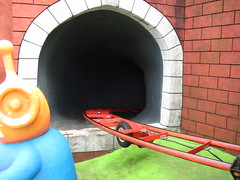





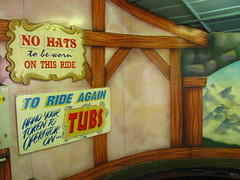

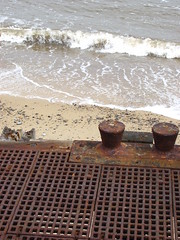

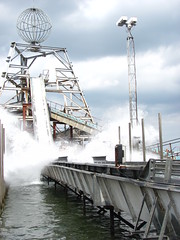

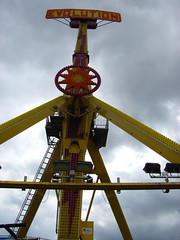












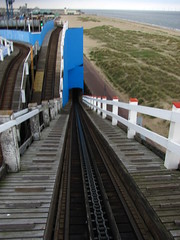
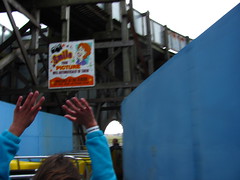
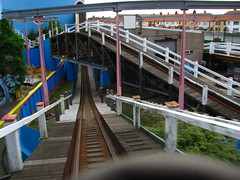



Comments